Hola un feliz inicio de fin de semana para mis mamis hermosas y papitos de esta hermosa comunidad de @motherhood un gran abrazo para todos ustedes espero que se encuentren muy bien llenos de mucha bendiciones y entusiasmo,hoy quise traerles un tema bastante interesante el cual es que hacer cuando los hijos no obedecen.
Hello a happy start of the weekend for my beautiful mommies and daddies of this beautiful community of @motherhood a big hug for all of you I hope you are very well full of many blessings and enthusiasm, today I wanted to bring you a very interesting topic which is what to do when children do not obey.
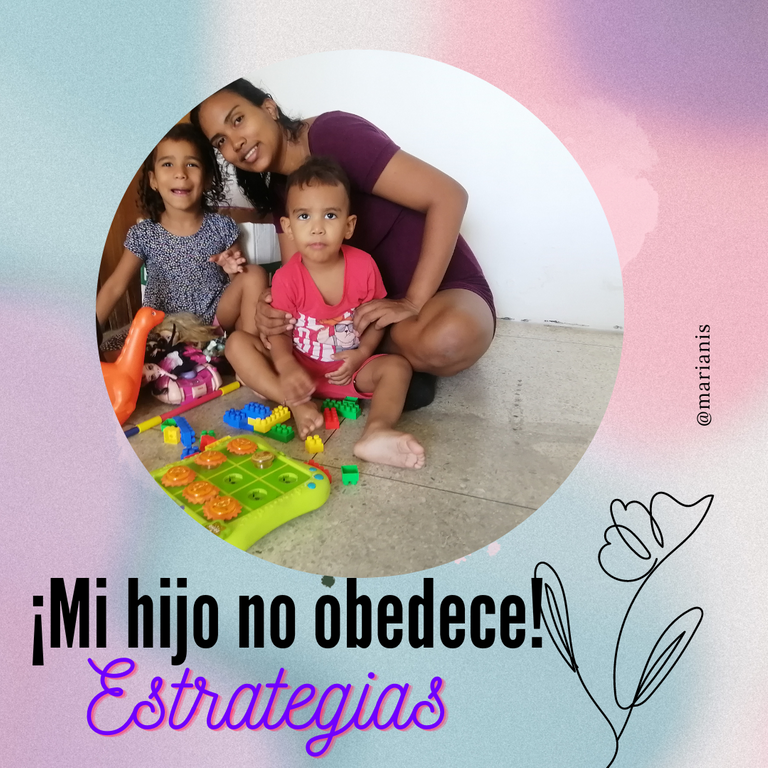
Muchas veces como padres decimos mis hijos no me hacen caso, hablo con ellos y es como si me ignoran, nunca hacen lo que les indico pero algo muy importante que hay que tener muy en cuenta es que antes de darle toda la responsabilidad al niño de que no obedece debemos de autoreflexionar nosotros como padres si lo que estamos pidiendo al niño es de una manera asertiva y clara para que entienda lo que le estoy pidiendo ya que un niño de un año, dos años , tres años , cuatro años y hasta cinco años apenas está empezando a regular sus emociones y aprender a seguir instrucciones y es importante ayudar al cerebro del niño con imágenes para que entienda más fácilmente lo que deseamos que haga.
Many times as parents we say my children do not listen to me, I talk to them and it is as if they ignore me, they never do what I tell them but something very important to keep in mind is that before giving all the responsibility to the child that does not obey we must self-reflect as parents if what we are asking the child is in an assertive and clear way to understand what I am asking because a child of one year, two years, three years, four years and even five years is just beginning to regulate their emotions and learn to follow instructions and it is important to help the child's brain with images to understand more easily what we want them to do, two years, three years, four years and even five years is just beginning to regulate their emotions and learn to follow instructions and it is important to help the child's brain with images to understand more easily what we want him to do.
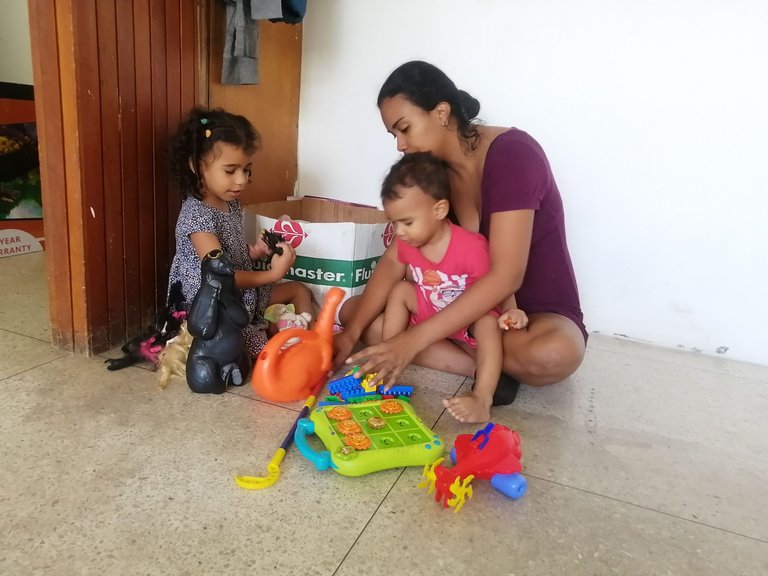
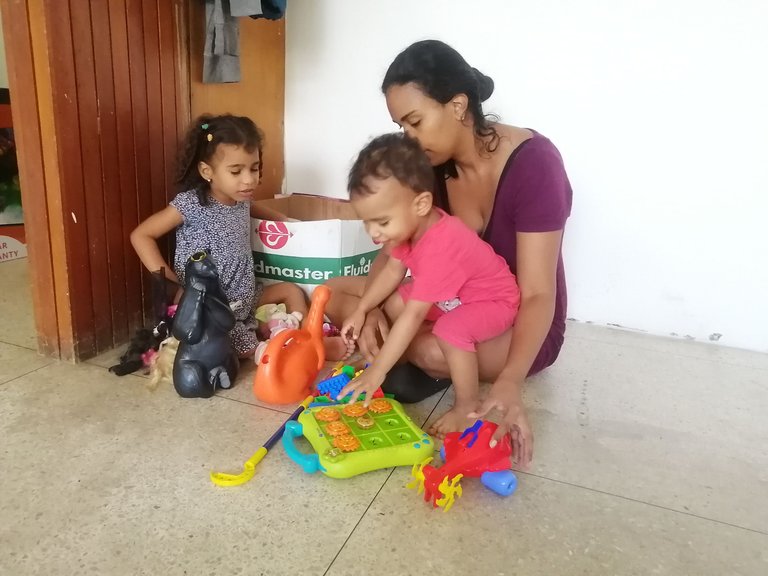
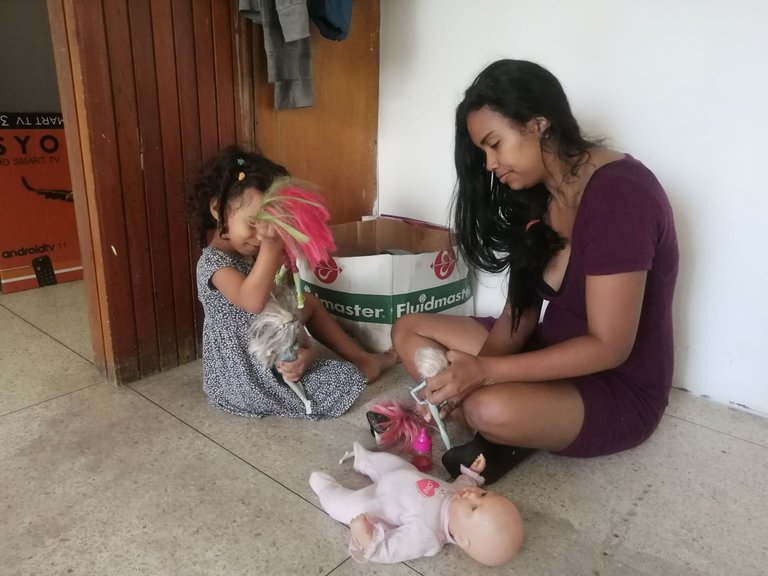
Es importante saber que para los niños todo lo divertido es jugar y las tareas les parecen aburrida pero si les enseñamos una manera divertida de hacer las cosas ellos amaran realizar las actividades ya que los niños a partir de los 11 meses siempre empiezan a decir a todo no quiero y realizar pataletas naturalmente de rebeldía para llamar nuestra atención cada vez que el mundo no va como ellos querían, pero eso no significa que nuestros hijos por hacer esto es un caprichoso que desobedece como dicen la mayoría de las personas, es por esto que la manera más efectiva para cambiar estas actitudes es vincular esa actividad donde pone resistencia de hacerla con cosas divertidas para realizarlas ejemplo en vez de decirle vamos a bañarte le decimos vamos a jugar con el agua , en lugar de decir nos vamos del parque decimos vamos a salir saltando como una ranita esta técnica me funciona muy bien con mis pequeños y me ha ayudado bastante ya que al convertir las actividades en un juego y momento de conexión hace que el niño quiera realizar la actividad fácilmente.
It is important to know that for children all the fun is to play and the tasks seem boring but if we teach them a fun way to do things they will love to do the activities because children from 11 months always begin to say to everything I do not want and perform tantrums naturally rebellious to get our attention every time the world does not go as they wanted, but that does not mean that our children to do this is a capricious that disobeys as most people say, This is why the most effective way to change these attitudes is to link that activity where he puts resistance to do it with fun things to do, for example instead of saying let's take a bath we say let's play with water, instead of saying we are leaving the park we say let's go out jumping like a frog this technique works very well with my little ones and has helped me a lot since turning the activities into a game and a moment of connection makes the child want to do the activity easily.
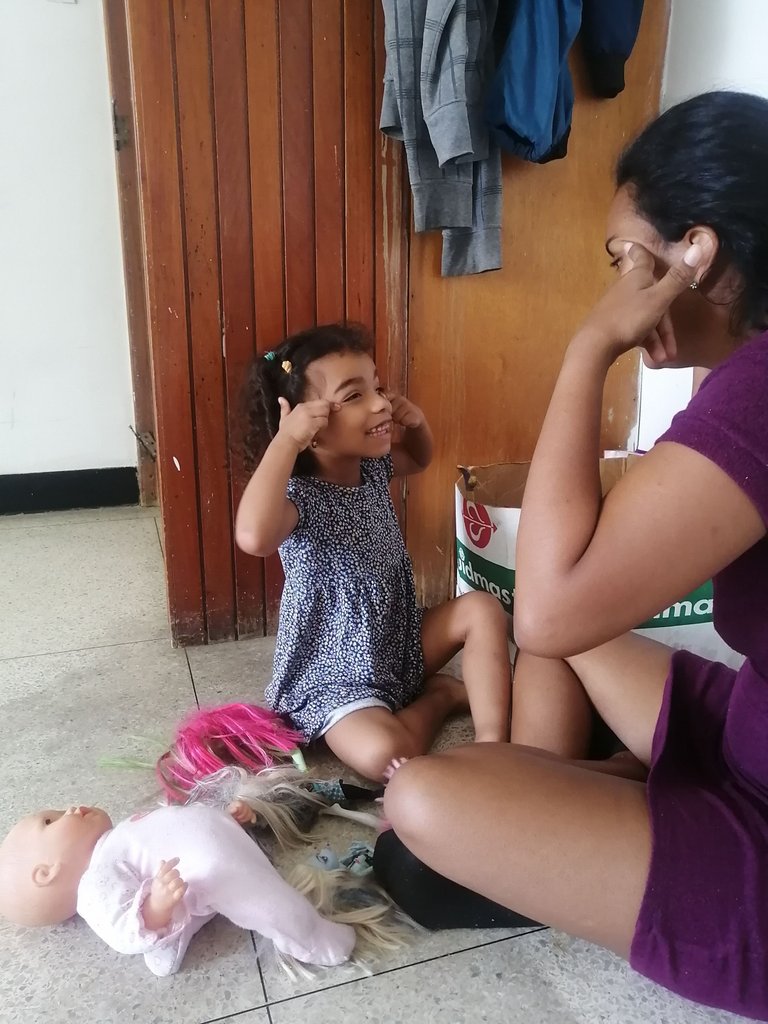
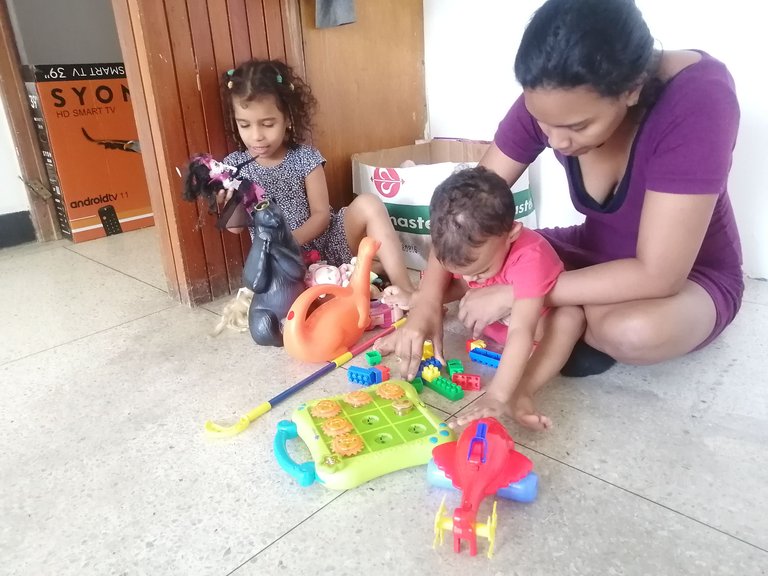
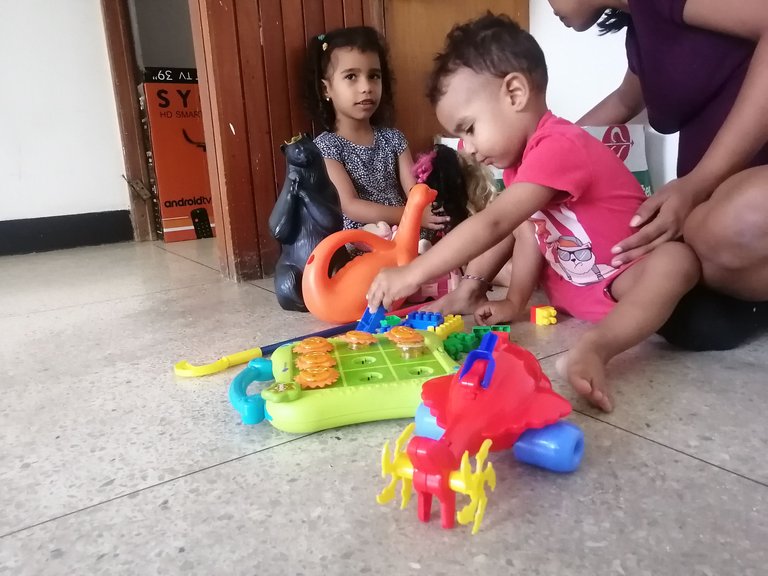
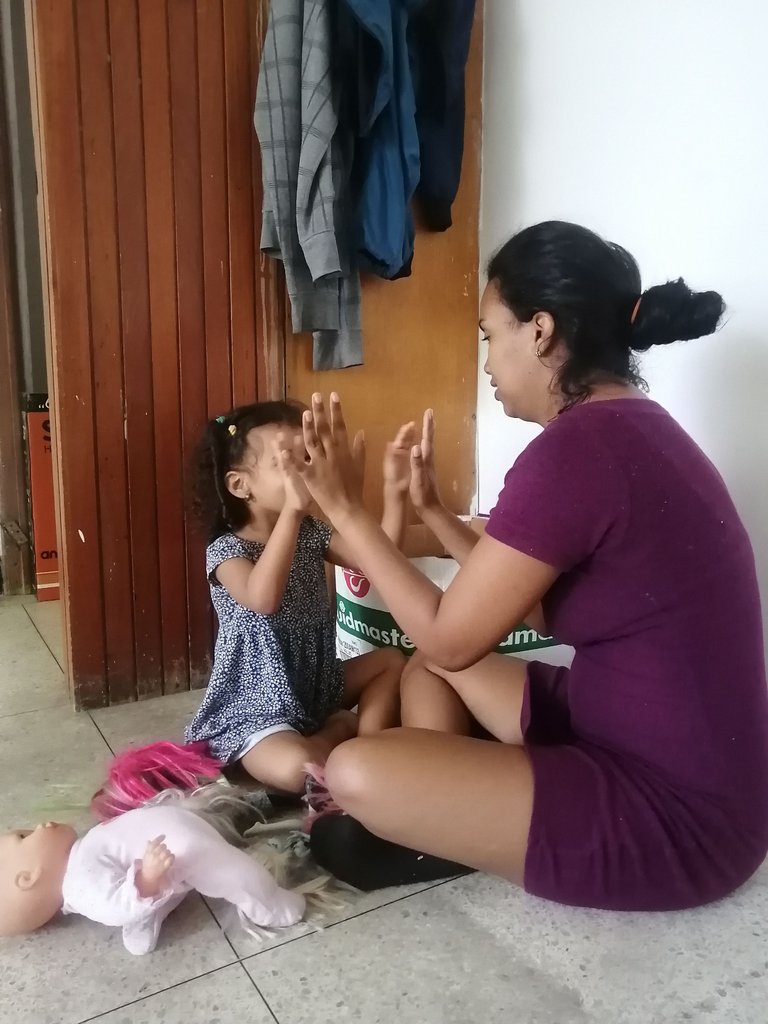
La primera estrategia que uso es :
Crear una rutina
Al crear una rutina a mis hijos acompañada de imágenes,dibujos y convertirla en un mapa que los oriente me a ayudado muchísimo en los momentos que no quieren realizar las actividades por ejemplo yo le imprimo con imágenes reales lo que debemos de hacer en las mañanas como es cepillarse los dientes, desayunar, bañarse ,vestirse, ver comiquitas, almorzar, dormir y con las imágenes reales el cerebro ve las imágenes y asocia la actividad que debe realizar así que en las mañanas empiezo enseñándole estas imágenes para que empiecen con la rutina de levantarnos y lo primero que hay que hacer es cepillarse los dientes mira la foto y ellos salen corriendo a buscar su cepillo y al terminar la actividad les digo muy bien lo lograron felicidades ya está lista la primera actividad se motivan muchísimo y regresan a ver que más deben realizar y van sintiendo esa satisfacción de que cumplieron cada actividad y al decirle lo hiciste, lo lograste te cepillaste los dientes y pasamos a la próxima actividad, algo que debemos tener en cuenta es que no debemos de premiar al niño con otra cosa si no con palabras motivadoras para que el mismo se alegre y siga a la otra actividad, estás rutinas permiten que el niño esté más relajado con mejor perspectiva de realizar las cosas que debe hacer a diario.
The first strategy I use is :
Create a routine.
By creating a routine for my children accompanied by images, drawings and turning it into a map that guides them has helped me a lot in the moments that they do not want to do the activities for example I print with real images what we should do in the mornings such as brushing teeth, breakfast, bathing, dressing, watching cartoons, having lunch, sleeping and with the real images the brain sees the images and associates the activity that should be done so in the mornings I start showing them these images so they can begin to do them, With the real images the brain sees the images and associates the activity to be done so in the mornings I start showing them these images so they start with the routine of getting up and the first thing to do is to brush their teeth, look at the picture and they run out to get their toothbrush and when they finish the activity I tell them very well you did it congratulations the first activity is ready, they get very motivated and come back to see what else they should do and they feel the satisfaction of accomplishing each activity and when I tell them you did it, you did it, you did it, you did it, you brushed your teeth and we move on to the next activity, something we must keep in mind is that we should not reward the child with something else but with motivating words so that he/she will be happy and move on to the next activity, these routines allow the child to be more relaxed with a better perspective of doing the things he/she should do every day.
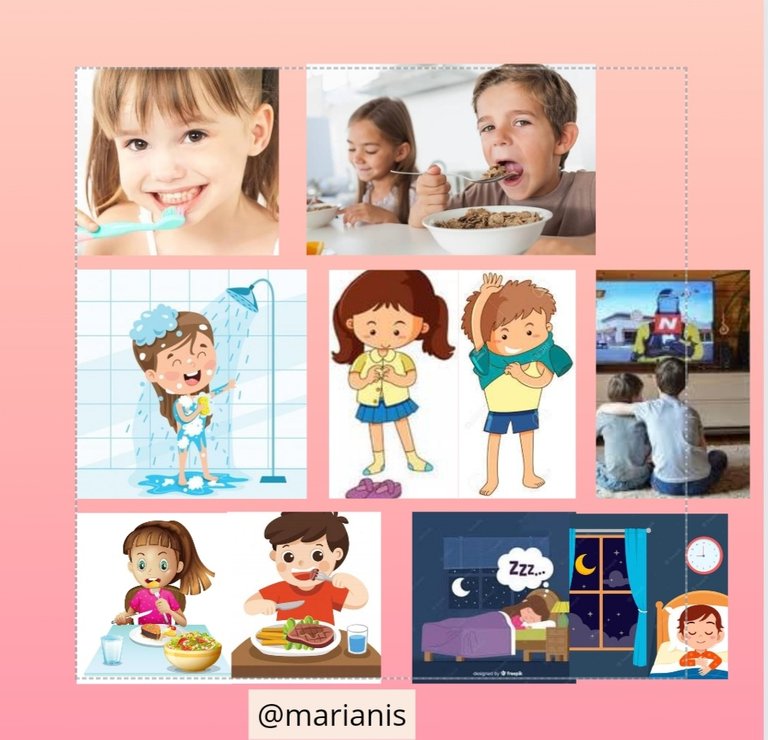
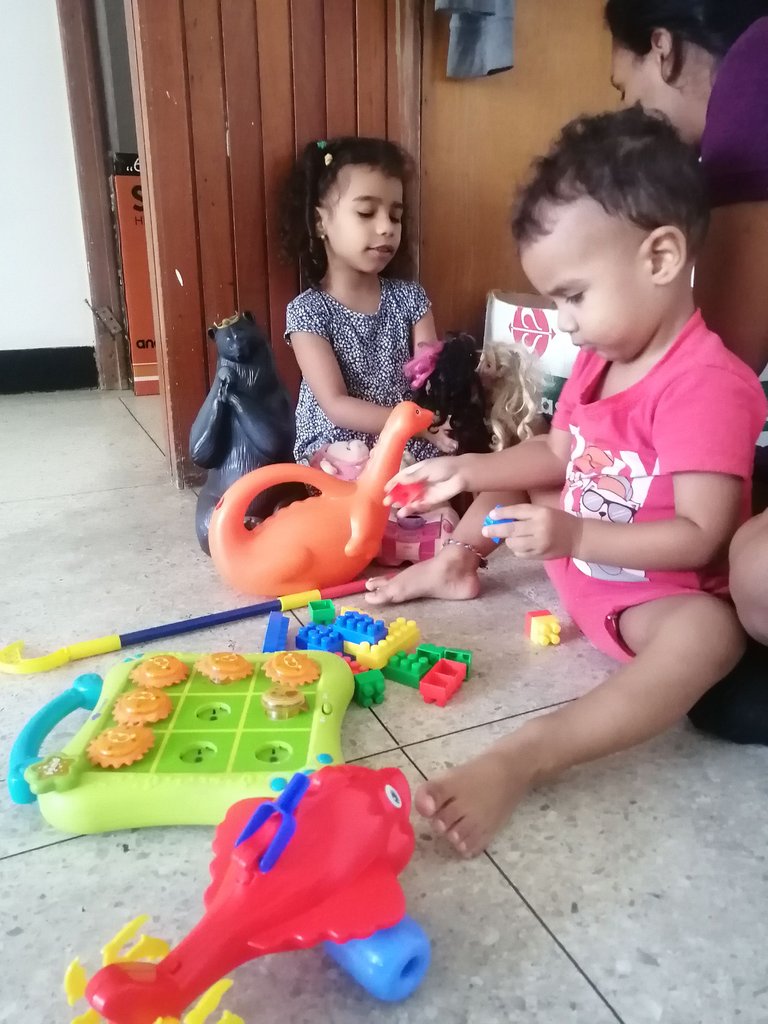
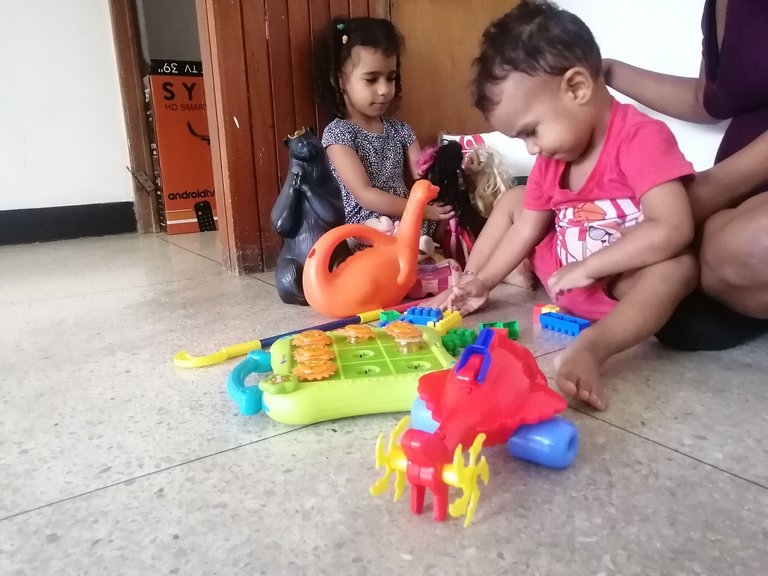
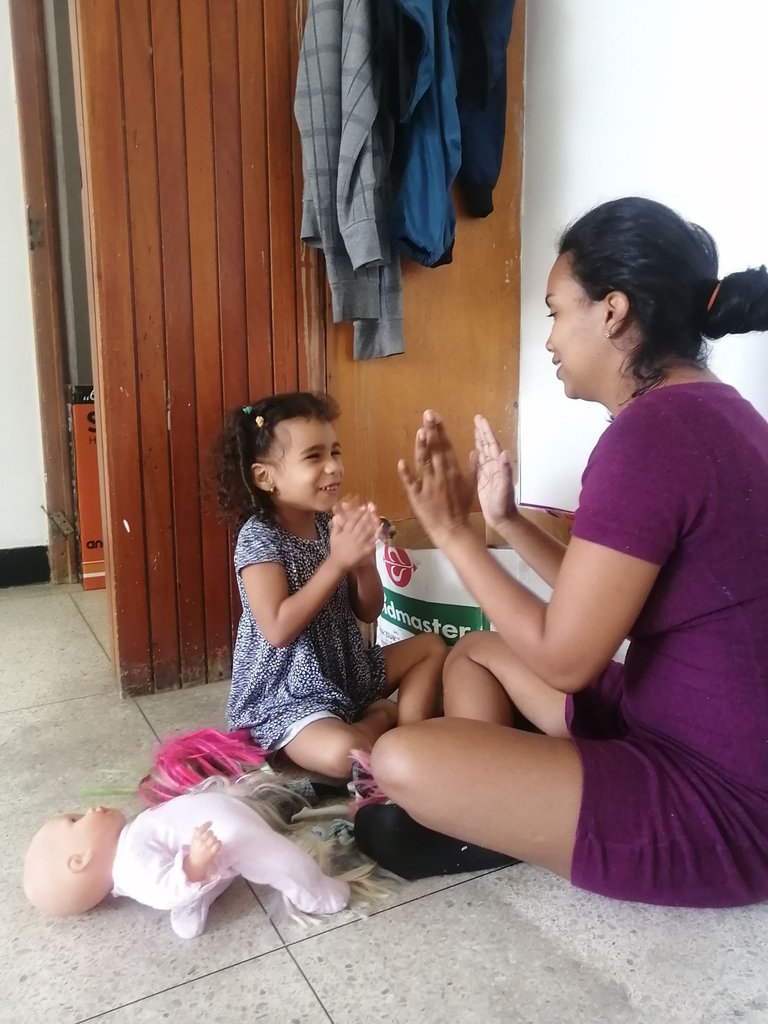
Segunda estrategia:
Desglosar las instrucciones
A veces les damos instrucciones a los pequeños y asumimos que ellos entendieron todo perfectamente y no siempre es así por ejemplo en la mañana le podemos decir vístete rápido vamos tarde al colegio y el niño responde listo y cuando vemos no se ha puesto las medias los zapatos y por el apuro que tenemos de que vamos tarde nos irritamos mucho pero el hecho es que el niño no entiende con toda la exactitud lo que es estar listo y debemos de explicarle paso a paso que es estar listo para ir a la escuela para que ellos sepan que al decirles estar listos es que deben tener la ropa ,zapatos, bolso listo para poder asistir a la escuela, otro ejemplo que utilizo mucho con mis pequeños es que cuando quieren tocar algo que no deben les digo coloca los brazos hacia atrás y mira solo con los ojos.
Second strategy:
Breaking down instructions.
Sometimes we give instructions to the little ones and we assume that they understood everything perfectly and it is not always like that for example in the morning we can say get dressed quickly we are late for school and the child responds ready and when we see that they have not put on their socks and shoes and because we are in a hurry because we are late we get very irritated but the fact is that the child does not understand exactly what it means to be ready and we must explain step by step what it means to be ready to go to school so they know that when we tell them to be ready they must have their clothes, shoes and purse ready to go to school, another example that I use a lot with my little ones is that when they want to touch something that they should not, I tell them to put their arms back and look behind them, Another example that I use a lot with my little ones is that when they want to touch something that they should not, I tell them to put their arms back and look only with their eyes.
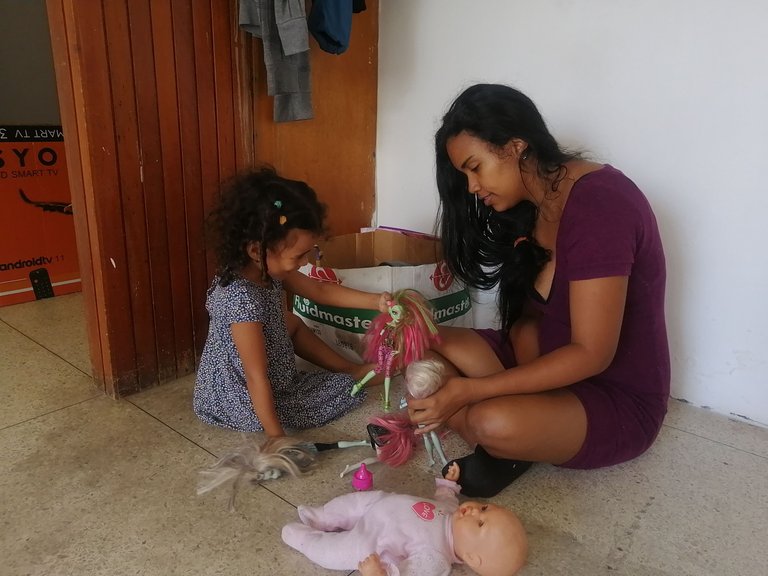
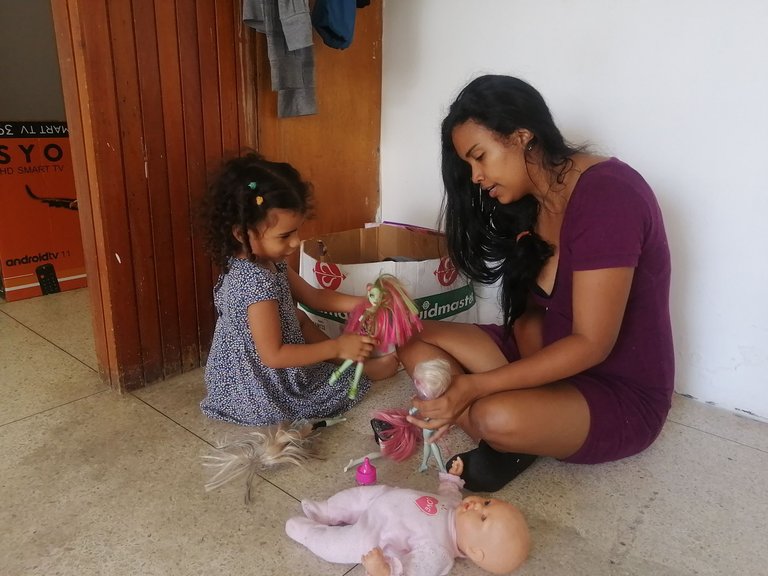
Tercera estrategia
Usa palabras asertivas
Muchas veces le pedimos a los niños que hagan actividades con favores, súplicas, ruegos no debemos usar palabras diciendo corazón ayuda a mamá y anda a bañarte si? no al contrario usemos frases como es hora de bañarte vamos a la ducha les digo esto porque cuando los pequeños sienten dudas en la voz del adulto piensan que están haciendo un favor al adulto y no cooperan sin embargo al usar frases cortas y precisas diciendo lo que deseamos que haga harán caso .
Es importante usar nuestra gran voz y tener una buena conexión con nuestros hijos desde pequeños porque esto es lo que nos ayudará a que nuestros hijos aprendan a no llevarnos la contraria en todo, es importante fortalecer ese vínculo con nuestros pequeños dedicándole tiempo , jugando con ellos juegos donde nos conectemos con ellos y siempre demostrarle sus logros del día en cada actividad que hace con frases como te felicito, lo hiciste muy bien yo actualmente cuando mis hijos guardan sus juguetes los felicito y les digo muy bien Nina recogiste los legos ahora sí podemos caminar bien lo hiciste muy bien Ethan recogiste la plastilina y la guardaste en su envase al describir sus logros ellos se sienten muy bien porque a quien no le gusta que lo alaguen por las actividades que realizamos y cuando nos sentimos bien nos comportamos mejor, así que cada vez que pienses que tú hijo es un malcriado, caprichoso porque no obedece recuerda tu hijo quizás no obedece porque le hace falta una rutina que lo ayude y que notemos sus pequeños logros del día a día.
Ahora me toca despedirme mis queridos mamis y papis si encuentran valiosas estas estrategias no duden en hacérmela saber aquí abajo 👇en la bandeja de comentarios y si tienes otras puedes comentarlas para así yo también ponerlas en práctica si te gustó esta publicación no olvides darle un me gusta y compartirla para que así está información llegue a muchas personas y ayudar a nuestros pequeños que son nuestra mayor bendición les envío un fuerte abrazo para todos ustedes y para cada pequeño que está en casa.
Third strategy
Use assertive words.
Many times we ask children to do activities with favors, pleading, begging, we should not use words saying heart help mommy and go take a bath yes? on the contrary we use phrases like it's time to take a bath let's go to the shower I say this because when the little ones feel doubts in the adult's voice they think they are doing a favor to the adult and do not cooperate however when using short and precise phrases saying what we want them to do they will pay attention.
It is important to use our great voice and have a good connection with our children from a young age because this is what will help our children learn not to contradict us in everything, it is important to strengthen that bond with our children by spending time with them, playing games with them where we connect with them and always show them their achievements of the day in every activity they do with phrases like I congratulate you, you did very well I actually when my children put away their toys I congratulate them and tell them very good Nina you picked up the legos now we can walk well you did very well Ethan you picked up the play dough and put it away in its container when describing their achievements they feel very good because who doesn't like to be praised for the activities we do and when we feel good we behave better, So every time you think that your child is spoiled, capricious because he does not obey remember your child may not obey because he needs a routine that helps him and that we notice his small achievements day by day.
Now it's my turn to say goodbye my dear mommies and daddies if you find these strategies valuable do not hesitate to let me know down here 👇in the comments box and if you have others you can comment them so I can also put them into practice if you liked this post do not forget to give a like and share it so this information reaches many people and help our little ones who are our greatest blessing I send a big hug for all of you and for every little one who is at home.
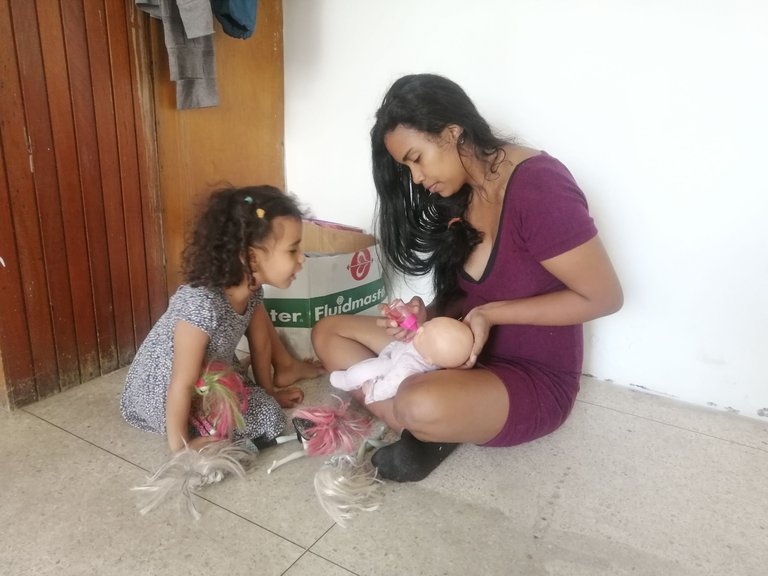
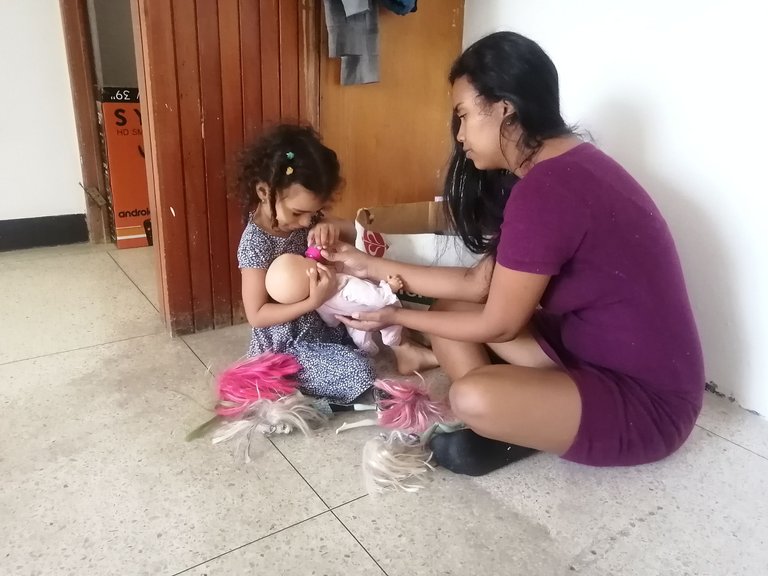
Todo el contenido que se encuentra en esta publicación es amplia-mente original del autor, cualquier duda y recopilación del mismo, deben hacer mención de mi persona.
- El texto es original de: @marianis
- Todos los Derechos Reservados / @marianis
- Fotografías tomadas de mi teléfono Huawei p30 lite y editadas en canvas.
- las fotografías son tomadas por mi esposo @edmundochauran.
All the content found in this publication is largely original by the author, any doubt and compilation thereof, must make mention of me.
- The text is original from: @marianis
- All Rights Reserved / @marianis
- Photographs taken from my Huawei p30 lite phone and edited in canvas.
- photos are taken by my husband @edmundochauran.

~~~ embed:1573386124944441345 twitter metadata:TWFyaWFuaXNzMTk5MHx8aHR0cHM6Ly90d2l0dGVyLmNvbS9NYXJpYW5pc3MxOTkwL3N0YXR1cy8xNTczMzg2MTI0OTQ0NDQxMzQ1fA== ~~~
The rewards earned on this comment will go directly to the people( @madushanka ) sharing the post on Twitter as long as they are registered with @poshtoken. Sign up at https://hiveposh.com.
Gracias por tus sugerencias amiga muy importante tratar de enseñarle a nuestros hijos a través de los juegos lo que deben aprender y para que se les haga más divertido. No es fácil cuando son pequeños crearles rutinas y como tú bien dices ellos solo lo que desean es jugar. Saludos amiga y bendiciones
Así es amiga ellos solo desean jugar, los míos pasan el día jugando tienen mucha energía así que a través del juego los enseño🤗, gracias por leer mi publicación un gran abrazo para ti.
Ay tu publicación me hizo recordar aquellos tiempos en que ponía a mi hijo a recoger los juguetes cantando conmigo la canción de A guardar a guardar cada cosa en su lugar... 🥰 saludos
Hayyy siii yo también le canto esa canción a mis pequeños 🤗🤗 gracias por leer mi publicación un gran abrazo enorme para ti
Dear @marianis,
May I ask you to review and support the Dev Marketing Proposal (https://peakd.com/me/proposals/232) we presented on Conference Day 1 at HiveFest?
The campaign aims to onboard new application developers to grow our ecosystem. If you missed the presentation, you can watch it on YouTube.
You cast your vote for the proposal on Peakd, Ecency,
Thank you!